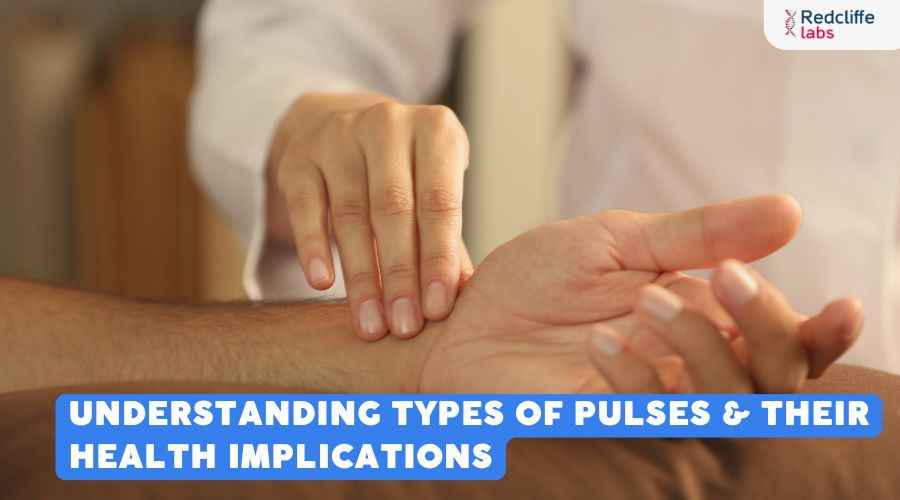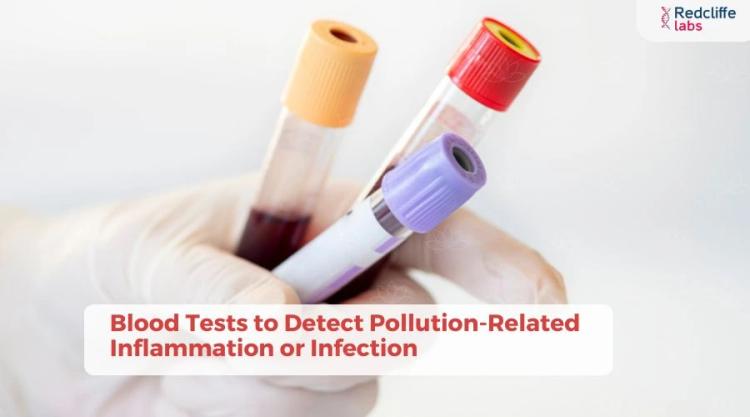Understanding Types of Pulses & Their Health Implications

Medically Reviewed By
Prof. Ashok Rattan
Written By Ruthika Bose
on Apr 10, 2025
Last Edit Made By Ruthika Bose
on Jul 19, 2025

Ladies and gentlemen, every beat of your heart, beating for each other or to keep you going, is essential and special.
Do you ever check on your heart? Can you catch the messages it sends in every beat? For that, you need to connect with the pulse points and be aware of the types of pulse in the body that act as the heart’s health messenger.
What is Pulse?
When the heart beats, it creates a pulse that sends oxygen and nutrient-rich blood to the arteries. The arteries then transport it to the different organs and tissues in the body. Every beat of the pulse is an indication of how well an individual's cardiovascular system is. You must have felt the blood vessels on your wrist bulge. That is the pulse beat.
The pulse is an indication of the number of times the heart beats per minute. The heart rate generally ranges between 60 and 100 times per minute.
Is Your Heart Beating Too Fast?
If your heart beats more than 100 times per minute when your body is at rest, it is considered fast. Rapid heart rate or tachycardia can be caused by various health factors and conditions.
If you feel dizzy or faint, keep palpitating, and notice an unusual increase in your heart rate, seek medical attention.
Do You Need to Worry If the Pulse Rate Is Slow?
If your pulse rate is below 60 when the body is at rest, it is considered slow or bradycardia. This condition is normal for some people, especially for athletes or people who are under medication.
Our body has numerous types of pulse points that help check the patient’s pulse and determine the efficient functioning of the heart. Read this blog to learn about the kinds of pulses and their role in ensuring your well-being.
Types of Pulses & Their Functions
1. Radial Pulse
You must have seen people place their index finger on the wrist to check the pulse rate. Do you know which pulse is located there? Yes, it is the radial pulse, located on the wrist at the base of the thumb. It helps to supply blood to the hand.
When you place your thumb on the wrist, you must have felt a bulge; if the bulge is bigger, you are palpating and need to relax your body. This type of pulse is used to:
- Monitor the heart rate
- To know about the blood flow
- Get an overview of cardiovascular health
2. Carotid Pulse
The carotid pulse is located in the neck below the jawline and palpates at the side of the neck. This type of pulse point helps assess your pulse rate quickly, especially during an emergency. The best part is that it does not disappear when one suffers from low blood pressure. It is useful for:
- Knowing about cardiac health
- Analyzing an emergency such as cardiac arrest or trauma
- Assessing blood circulation
3. Femoral Pulse
The femoral pulse is located on the lower leg where the thigh meets the calf and is easily identifiable. It is a large vessel that helps transport blood to the lower part of the body and is beneficial in:
- Analyzing the blood flow to the legs
- Evaluating blood flow in patients with peripheral artery disease
- Helping pediatricians to locate the pulse in children easily
4. Brachial Pulse
The brachial pulse is located on the inside of the arm near the point where it meets the bicep, above the elbow. It runs from the heart and through the shoulder, branching into the radial and ulnar arteries. It is also useful in:
- Assessing the blood flow in the arms
- Identifying the proper placement of the stethoscope during blood pressure measuring
- Evaluating the blood circulation in patients with cardiovascular issues
5. Temporal Pulse
The temporal is a type of pulse that is located in front of the ears on the sides of the head and is useful in:
- Assessing headaches
- Checking for vision loss in elderly people
- Evaluating blood flow in the cerebral part.
- Detecting if there is any neurological disorder
6. Apical Pulse
The apical pulse gives an overview of the cardiac status of an individual. It is also known as the Point of Maximum Impulse (PMI) and is found at the fifth intercostal space (ICS) at the left midclavicular line.
It can be felt at the apex of the heart and is helpful in:
- Assessing cardiac function
- Measuring heartbeat and strength in cardiovascular patients
- Evaluating the effectiveness of cardiac medications
- Giving an overview of people suspected of cardiac conditions like heart failure
7. Popliteal Pulse
The popliteal pulse is located behind the knee and is a type of artery in the thigh that supplies oxygenated blood to the lower leg or foot. It is useful:
- Assessing the blood flow to the legs
- Evaluating the blood circulation in patients with peripheral artery disease
- In analyzing heartbeat when other pulse points are inaccessible
If the pulse can not be felt, it might mean that some condition in the body is blocking blood flow or damaging the artery.
8. Posterior Tibial Pulse
The posterior tibial pulse is a type of pulse that helps check for circulation in a patient’s lower leg. It branches from the femoral artery, supplies oxygenated blood to the lower limbs, and runs behind the knee. It is helpful in:
- Indicating if there is any issue in circulation
- Finding if there is a blood clot, cardiac issue, or infection in the body
- Detecting if there is any cause for health concern
Each of these types of pulse has a major role in ensuring the body’s well-being.
How to check the Pulse Rate?
If the pulse rate is not within the normal range, it might indicate some serious medical attention, and you need to keep a check on it by:
- Properly listening to the sound of the blood pumping through the arteries
- Keep a timer and count the no.of times the pulse beats in one minute
- Analyzing if it is regular or irregular
If you feel that something is abnormal, consult your doctor immediately. However, everybody is designed differently, and their pulse rates might vary depending on various factors.
Factors Affecting Pulse Rate
The factors that you need to keep in mind when checking the pulse rate are:
- Blood Pressure: Increased blood pressure means an increase in pulse rate
- Age: Elderly people have slower heart rates than the younger generation, and detecting their pulse rate becomes difficult.
- Gender - Men have faster heart rates than women; hence, the pulse rate differs for both genders.
- Health Status - Athletes and people on medication have lower heart rates and blood pressure than normal people.
- Temperature - Pulse rate can be fast or slow depending on the patient’s body and environment.
- Weight - An obese person can have a lower pulse rate than a normal person.
Pulse Rates By Age
| AGE | PULSE RATE |
| Newborn & Infant | 100-180 bpm |
| Toddlers to School-Age | 75-120 bpm |
| Teens | 60-170 bpm |
| Middle Age | 80-160 bpm |
| Elderly | 75-130 bpm |
Does the Heart Rate Speed Up During Exercise?
If you are exercising, your heart rate speeds up to 130-150 beats per minute as the heart needs to work and pump more oxygen-rich blood than usual to other parts of the body.
Certain other factors that affect heart rate are:
- Dehydration
- Fever
- Infection in the body
- Medications
- Anemia
- Thyroid disorder
- Circulatory disorder
- Cardiovascular diseases
Tests that Tell You About Your Heart Health
If you feel something unusual with your body or observe abnormal pulse rates, seek medical attention. Consult a doctor to get your cholesterol levels, high-sensitivity C-reactive protein, and Troponin T Test done to understand your cardiovascular health. You can easily book these tests online from the Redcliffe Labs website and enjoy free home sample collection and doctor consultation.
FAQ
1. What is the normal pulse rate?
It is considered normal if the pulse rate is between 60 and 100 beats per minute.
2. When is the pulse rate fast?
If the pulse rate is above 100 beats per minute when the body is at rest, it is considered fast.
3. When is the pulse rate slow?
If the pulse rate is below 60 beats per minute when the body is at rest, it is considered slow.
4. What factors affect pulse rate?
Blood pressure, age, gender, health conditions, temperature, and weight are factors that affect pulse rate.
5. Where is the radial pulse located?
The radial pulse is located on the wrist at the base of the thumb and supplies blood to the hand.



